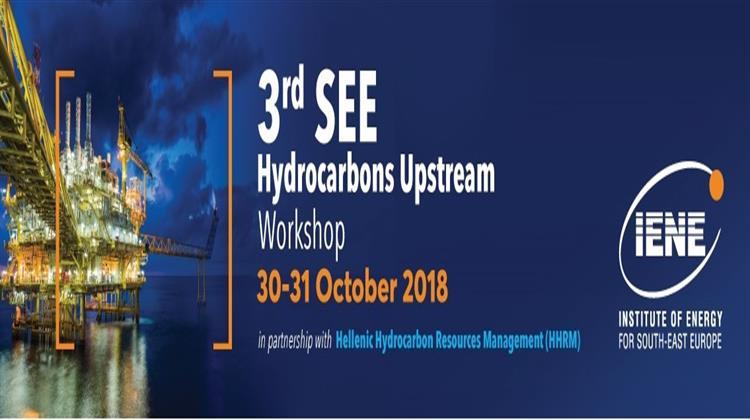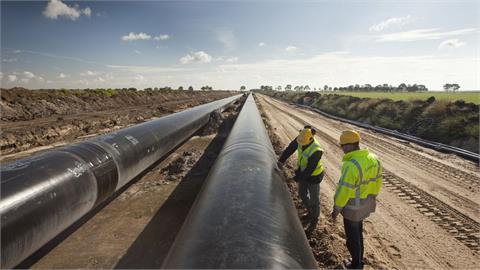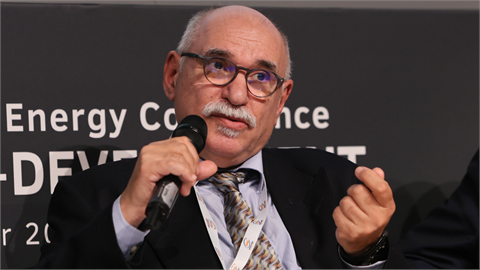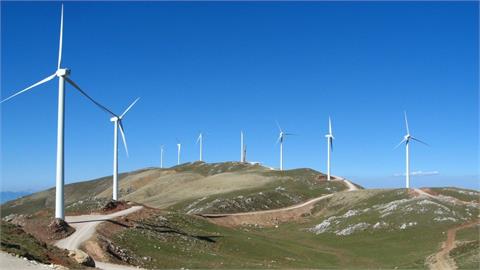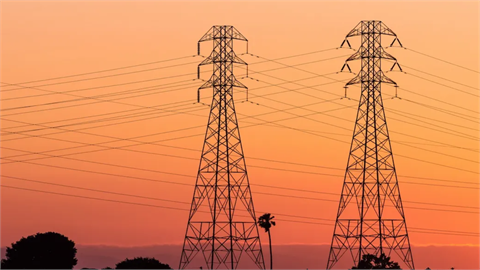IENE’s latest workshop which was organized in Athens at the end of last month (October 30-31) helped reveal the true extent of SE Europe’s not insignificant oil and gas resources. These are to be found in four distinct geographical zones, which inadvertently correspond to geological ones, and arebroadlylocatedin the Adriatic, which extends south tothe Ionian, the Black Sea, Turkey’s Anatolian Basin and the East Mediterranean.
IENE’s latest workshop which was organized in Athens at the end of last month (October 30-31) helped reveal the true extent of SE Europe’s not insignificant oil and gas resources. These are to be found in four distinct geographical zones, which inadvertently correspond to geological ones, and arebroadlylocatedin the Adriatic, which extends south tothe Ionian, the Black Sea, Turkey’s Anatolian Basin and the East Mediterranean. Thanks to a highly select group of top experts who participated in this highly focused two-day intensive event,the region’s activities in the upstream sectorwere fully discussed with lots of new data presented for the first time. Following welcome remarks by the chairman of IENE Mr. John Chadjivassiliadis, and Ms. Tereza Fokianou, chairperson of IENE’s Upstream Working Group, the Institute’s Executive Director introduced the subject matter of the Workshop through a brief presentation.
Then Dr. Yannis Bassias, chairman and CEO of Hellenic Hydrocarbons Recourses Management (HHRM), the Greek state agency in charge of the sector, reviewed Greece’s latest efforts in E&P in the context of SE Europe and Balkans drive to develop further indigenous oil and gas resources. Bassias then provided an update focusing on deep sea exploration by citing the huge challenges which lie ahead.
Romania’s extensive hydrocarbon reserves offshore and onshore in the Black Sea and production activities were presented in great detailby Dr. Valentina Ivan of EnerCap Capital Partners who provided considerable insight into latest moves by the Romanian government which have apparently stalled temporarilyfurther exploration and production programme by companies.Bulgaria’s hydrocarbons footprint and latest developments in advancing the country’s hydrocarbon exploration and production were explained by Dr. Valentin Kunev, chairman of the Balkan and Black Sea Petroleum Association. Georgia’s upstream sector was at then presented by Dr. Giorgi Tatishvili of the State Agency of Oil and Gas where extensive 2D and 3D seismic surveysuse underway. As Dr. Hans Hutta summed up the Black Sea area will need a lot more deep exploration drilling if its true potential is to be exploited and could in the long term emerge as an important oil and gas producing region capable of meeting a portion of European energy demand.
With Turkey being the largest country in the region both in terms of geography and energy demand, efforts continue unabated in exploring for new oil and gas fields both onshore and offshore. Dr. YurdakulYigitguden, a well known energy expert and former Secretary General of the Ministry of Energy and Natural Resources in Ankara and more recently Coordinator of OSCE economic and environmental activities, presented a detailed report on Turkey’s exploration and production efforts having first provided a most useful background on Turkey’s overall energy sector. In spite of consistent efforts over the yearsindigenous production is stagnating while oil and gas imports are growing with proven reserves also diminishing. Offshore drilling in Turkey’s Black Sea sector continues with several drilling operations undertaken and modest gas production continuing. There is still potential for new discoveries from both conventional and unconventional oil and gas fields in the Eastern Thrace Basin, in the S.E. Anatolian Basin and in offshore plays along Turkey’s Mediterranean coast.
The oil and gas potential of the Alpine Folded Belt, part of the Dinaric - Hellenic range, which expands between the Dinarides in the North and the Hellenides in the south (ie North South Adriatic and Ionian) was fully exploredby Dr. VlatkaVanicek, director for Environmental Protection at the Croatian Hydrocarbon Agency, and by Mr. Ilia Gjermani, Head at the Regulatory and Management of the Petroleum Sector of Albania’s ministry of Economy,but also by Dr. Katerina Kostaki of Greece’s HHRM, and by Prof. AvraamZelilidis from the University of Patras and by Mr.Ivan Inchenko, an independent -UK based energy consultant.
Mr. Yannis Grigoriou, CEO of Hellenic Petroleum Upstream S.A, (part of the Hellenic Petroleum Group.) focused on Hellenic Petroleum’s strategy and actions for the resurgence of the Greek E&P sector including the company’s participation in well formed international concortia which have now been awarded major onshore and offshore concessions in Greece’s western part but also southwest of Crete. Special mention was made to the Patraikos Gulf lease where 3D seismic have been completedas the company gets ready to carry out drilling within 2019. The company estimates that some 140 mboe of mostly oil reserves are in place in the Patraikos area.
The place of Greece in the oil and gas E&P of SE Europe and the Balkans was discussed in some detail by Dr. Yiannis Bassias, chairman and CEO of the Hellenic Hydrocarbon Resources Management (HHRM). More specifically Dr. Bassias referred to the recent discoveries of gas in SE Mediterranean and the Black Sea and the new concept model which has emerged since 2015 in the Mediterranean, the improvement of deep and ultra – deep drilling technologies and LNG’s increasing commercial importance, and the need for diversity of gas and oil imports for Europe. "In short”, noted Dr. Bassias,"upstream and midstream convergence brings value added and hence presents as a promising investment opportunity in the current European oil and gas sector”."Chasing hydrocarbon reserves in CombinateBuildups: Examples from the Eastern Mediterranean” authored by N. Papadimitriou, K. Oikonomopoulos, G. Makrodimitras, all at HHRM, provided an excellent introduction for East Mediterranean hydrocarbon activities.
The Israeli experience was expertlypresented by Dr. Gina Cohen who provided a detailed account of Israel’s first and subsequent discoveries, which changed the scene for good for hydrocarbon exploration in the East Mediterranean. The significal challenges which now lie ahead for Israel’s gas exports were fully analyzed by one of the country’s top energy experts. Export destinationsat present include Jordan and Egypt, while long term options remain Turkey and Europe,through the much tootedEast Med Pipeline.
Cyprus’s findings and current and planned exploration programme was presented by Mr. Demetris Fessas, Assistant Manager of Cyprus’s Hydrocarbon Company, which is the National Hydrocarbons Company of the Republic of Cyprus (RoC) and is responsible for the commercial management of the RoCrights as included in various production sharing contracts. With three exploration rounds already undertaken Cyprus has made two important discoveries (Aphrodite and Calypso) with concessions signed in six out of its twelve offshore blocks. Targeting Zohr analogues, exploration efforts continue in Blocks 6, 7,10 and 11. A number of monetization options are now being considered as part of the overall plan by the RoC in exploiting its offshore hydrocarbon resources.
Commenting on the broader hydrocarbon picture in the East Med, Dr. Charles Ellinas. CEO of CNHC, said that ever since the discovery of giant gas-fields-Tamar, Leviathan and Zohr, the East Med has been the focus of attention, with Egypt at the centre of it. Egypt currently focuses on the development of Zohr and gas market liberalization, Israel is still looking for gas export routes, but close to gas exports to Egypt while Lebanon recently awarded two licenses, buthas EEZ disputes. In Cyprus the focus is on resumption of negotiations over the Cyprus problem and the development of Aphrodite, where an agreement has just been signed enabling a pipeline to Egypt.Ellinas also said that higher oil prices have helped improve global energy markets but they remain challenging in the longer -term. A key conclusion by Charles Ellinaswas that the East Med still has strong prospects for more gas discoveries, especially with ExxonMobil’s involvement in Cyprus, but securing export markets remains a huge challenge.
Finally George Panagopoulos of Energean Oil and Gas talked about the development up to production stage of a small,but of strategic importance,oil field offshore west Peloponnesus, at Katakolon, with some 10.5 million barrels (P2) reserves while Tereza FokianouCEO of Flow Energy and Mr. Aditya Saraswat of Rystad Energy contributed useful insights especially on deep sea challenges.
With some 65 participants actively engaged in two days of presentations and discussions and social gatherings IENE’s latest SEE Upstream Workshop proved a highly successful event. The 3rd IENE upstream Workshop was organized under the auspicesof the Hellenic Ministry of Environment and Energy (which oversees Greece’s hydrocarbon sector) and in partnership with the Hellenic Hydrocarbons Resources Management (HHRM), while it was sponsored by Hellenic Petroleum and Energean Oil and Gas.
